
Studies
Examples
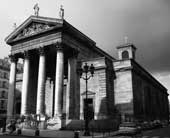
Study prior to restoration
Notre-Dame de Lorette Church, Paris, 2009
Preliminary study for the restoration of the choir of the Church Notre Dame de Lorette.
Drawing of a map showing the degradations with photographic coverage.
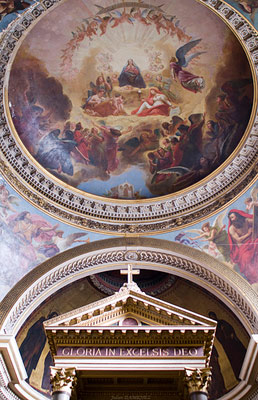
View of the Dome
Sponsor
City of Paris - Sous Direction du Patrimoine et de l'Histoire
Direction des Affaires Culturelles
Conservation des œuvres d'art religieuses et civiles
16 rue des Blancs Manteaux 75004 Paris
Team
Painting restorer and group representative : Cécile Charpentier
Co-contractor : Guillaume Bénard-Tertrais
Subcontractors : Giovanna Carravieri, Aurélia Garnier Lienart, Lucia Tranchino
Intern : Pauline Libert
Purpose of the Study
The study establishes a program of restoration for the whole choir and provides an estimate of the amount of time required for the entire project.
It lists all areas of the walls to be restored, whatever the medium: flat, molded or carved.
The choir also includes various independent works and a collection of decorative paintings on the architectural structures.
Work performed under the dome
The dome represents the Translation de la maison de Lorette painted by Pierre Delorme in 1835-1837. (Diameter : 7,20 m)
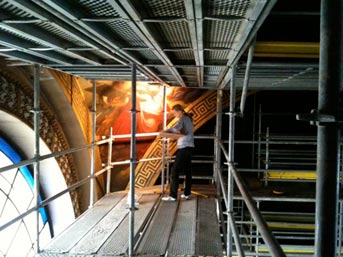
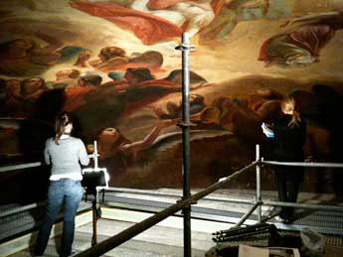
Study made from the scaffolding under the dome
The most damaged parts of the choir were consolidated prior to restoration at the same time as the study.
Deciding how to best preserve the original material in view of subsequent restoration.
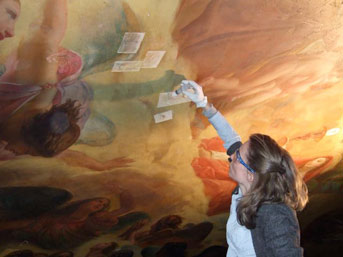
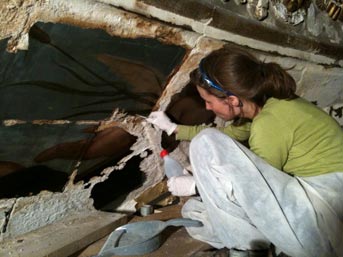
Under the dome which represents the Translation de la maison de Lorette, consolidation of the blisters on the paint layer.
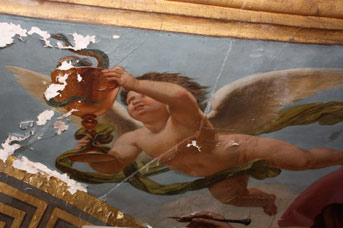
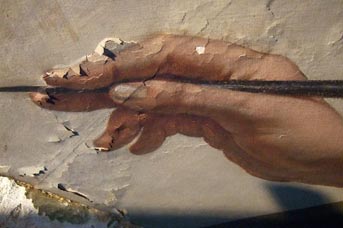
Details of scenery representing a portion of corner pieces adorning the spandrel of the dome:
1. Paint chippings and saline deposits occurred as a result of water infiltration.
2. Blistering and flaking paint layer
Work performed on the cul-de-four
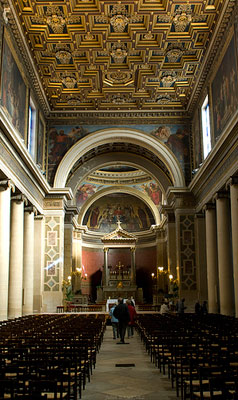
View of the nave and the choir of the Church Notre Dame de Lorette with the cul-de-four of the apse
painted by François-Edouard Picot (1786-1868) in 1836, representing The Coronation of the Virgin
on gilt background. (9 meters in diameter)
Humidity problems had caused the degradation of the mortar joints and plaster resulting in blistering and falling material. Blistering found mainly around the lacunae and cracks.
Noted also many cracks occurred because of structural problems due to the building having shifted over time.
Cracks had been filled in and retouched in past interventions, as well as some of the plaster that had been damaged and crudely restored.

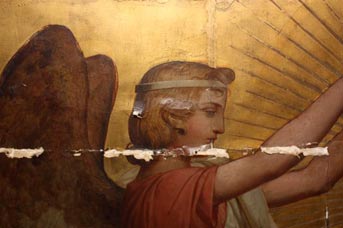
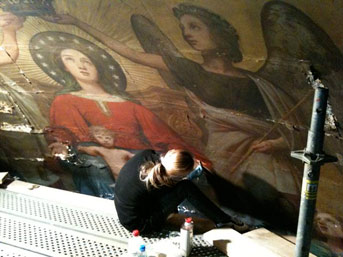
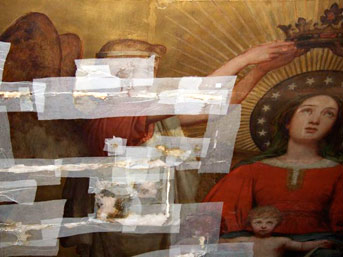
Details of the Coronation de la Vierge being consolidated.
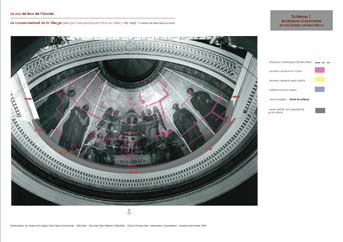
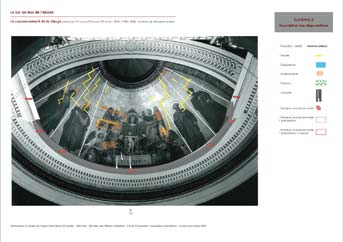
Drawings made during the study, showing the various degradations.
In order to study the consecutive elements of the work, we removed micro-samples to be analyzed by a laboratory: an infrared spectrometry study of the cohesive substance binding together the paint layers was conducted in order to differentiate between the wax or oil based binders.
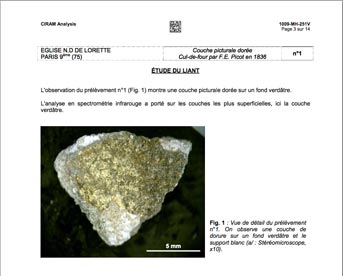
Extract from the report of the laboratory.
